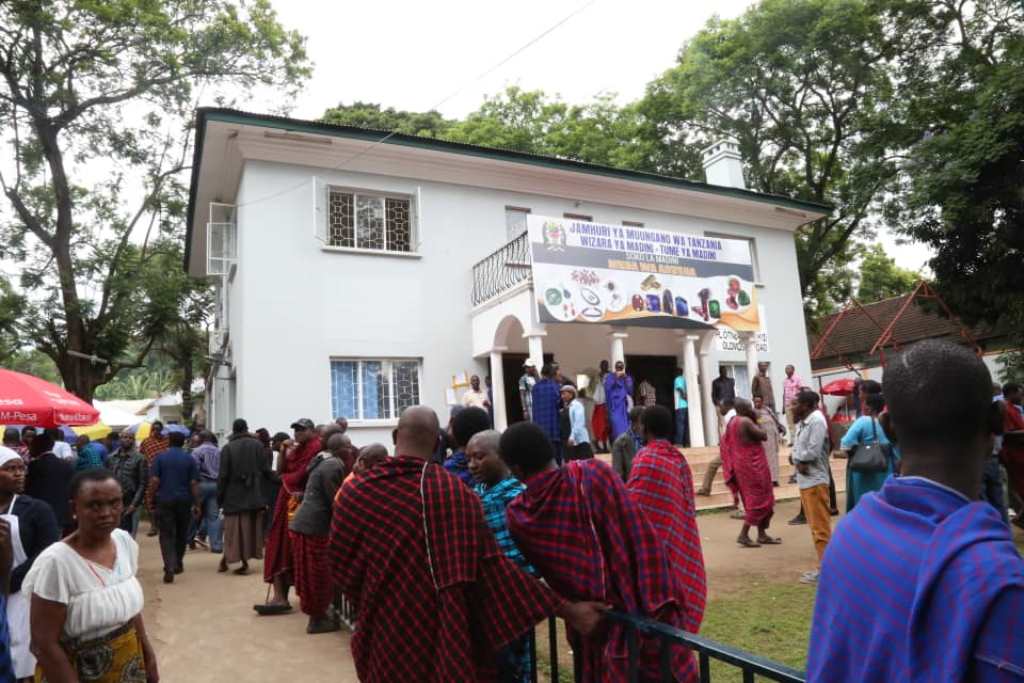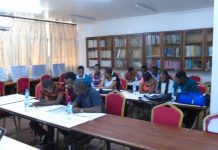Author: MARY RAMADHANI
AfricaPress-Tanzania: THE establishment of mineral centres in the country’s mineral-rich regions has boosted revenue collection to over 358.9bn/-in the fiscal year 2019/20.
The fifth phase government establishes mineral trading hubs across the country to eliminate mineral smuggling and crack down on tax evasion.
These mineral centres are part of President John Magufuli’s drive to optimise mineral trading to benefit not just multinationals, but also small-scale miners, brokers and dealers and ensuring the country gained more from its natural resources.
Presenting the Ministry of Minerals’ budget estimates for 2019/20, Minister for Minerals, Mr Doto Biteko said until February this year, 28 mineral centres had been established across the country.
The hubs are established in the regions of Mwanza, Geita, Chunya, Arusha, Namanga, Singida-Sekenke, Dar es Salaam, Kahama, Shinyanga, Ruvuma, Katavi, Tanga, Iringa, Manyara, Singida, Shinyanga, Dodoma, Kigoma, Tabora, Mbeya, Mara and Songwe.
He explained that the centres were intended to provide means of formalising a trading system, giving small-scale miners access to a government-regulated market where they could directly and legally trade gold without the necessity of travelling to major cities.
In addition, the mineral buying centres will allow the government to collect more levies from both miners and businesses.
He noted that the establishment of the hubs had addressed major challenges that faced the mining sector for a long time, including small-scale miners who lacked places to sell their minerals, as well as the presence of illegal mining and smuggling of minerals.
“Since the launch of these markets in March 2019 to February 2020 at least 10.33 tonnes of gold, 13,685.74 carats of diamond, 20.10 tonnes of tin, 550.87 tonnes of raw gemstones and 90,532.41 carats of other gemstones were sold through the market centres.”
He further explained that from March 2019 to February 2020 through the mineral centres, small-scale-miners had traded minerals worth over 1tri/- (1,088,693,000,153.19) and in turn generated a revenue collection of over 78bn/- (78,008,413,233.13) to the government.
“The mineral centres have ensured all constraints in the mineral trade chain are removed and promote the industry and benefit Tanzanians individually and collectively.”
He noted that the market centres had brought about significant change in the mining sector, including accelerating the growth of the sector by 12.6 per cent from January to September 2019, compared to 0.9 per cent of 2018.
The mineral centres have also brought about other benefits to the people, including the creation of employment opportunities and an increase in incomes for small-scale miners. He explained that he commended President John Magufuli and his government for the great strides that had been made in the country.
Mr Biteko said the ministry had also facilitated the creation of an electronic mining marketing system that monitored sales trends, which started being used in January this year.
“The electronic system includes the amount of minerals that reached the market, sales, prices and government revenue collected through royalty, inspection fees and service charges,” he mentioned.
In his inaugural speech of the 11th sitting of Parliament in 2015, President Magufuli firmly said the government would ensure the minerals and natural resources were used for the benefit of the nation and laws and regulations would be amended to make their enforcement more effective.
This is in line with what is stated in the CCM electoral manifesto that from 2015 to 2020, the ruling party under the administration of President Magufuli will direct its government to take numerous actions to continue promoting the mining industry and increase its contribution to the GDP.
Meanwhile, during his 2020/21 budget estimates to the House, Minister for Finance and Planning, Dr Philip Mpango, said there had been notable achievements in the mining sector, including the establishment of 28 mineral centres.
He also mentioned the completion of the construction of four centres of excellence in Bukoba, Handeni, Bariadi and Musoma, the completion of two model gold smelters in Lwamgasa and Katente and the completion of the one-stop centre at Mererani.
He said there was also the strengthening of mineral control and mineral smuggling mainly due to the construction of a 24.5km wall around Tanzanite Mine at Mererani.
“This has brought about an increase in mineral revenue collection from 196bn/-in 2015/16 to 470bn/-from July 2019 to April 2020.”
An example of such tremendous revenue hikes is the launch of the 542m/- international gold exchange market in Geita Region early 2019 and that of Chunya, thus doubling the quantity of gold sold in a month.
“Since its establishment, the Geita mineral trading centre has recorded the selling of 198kg of gold, which is equivalent to the quantity of gold previously sold annually, while Chunya Centre traded 24kg of gold valued 1.8bn/-in four days, equivalent to the quantity previously sold in one year,” noted Mr Biteko as he launched Mwanza Mineral Trading Centre last year.
He said before the establishment of the centers, Chunya District was recording the trading of only 12kg of gold annually.
Mr Biteko explained that to reach the goal set for the improvement of the ministry, it would set up requisite mineral testing equipment. “It will ensure all basic services, including financial, regulatory authorities and various revenue collection bodies are available.”
The ministry will also enhance security and ensure the availability of adequate experts and even the establishment of new mineral hubs, according to the minister.







